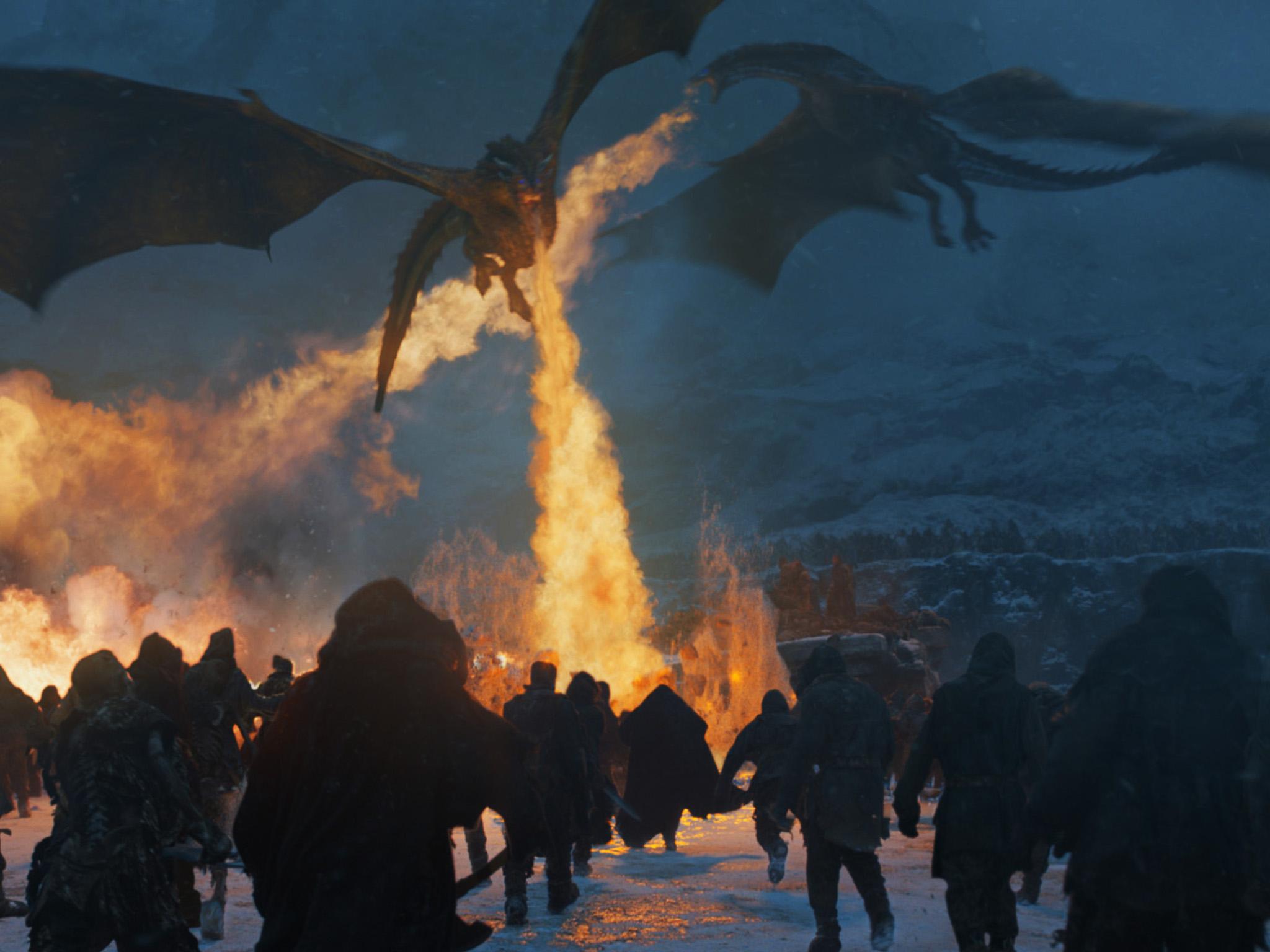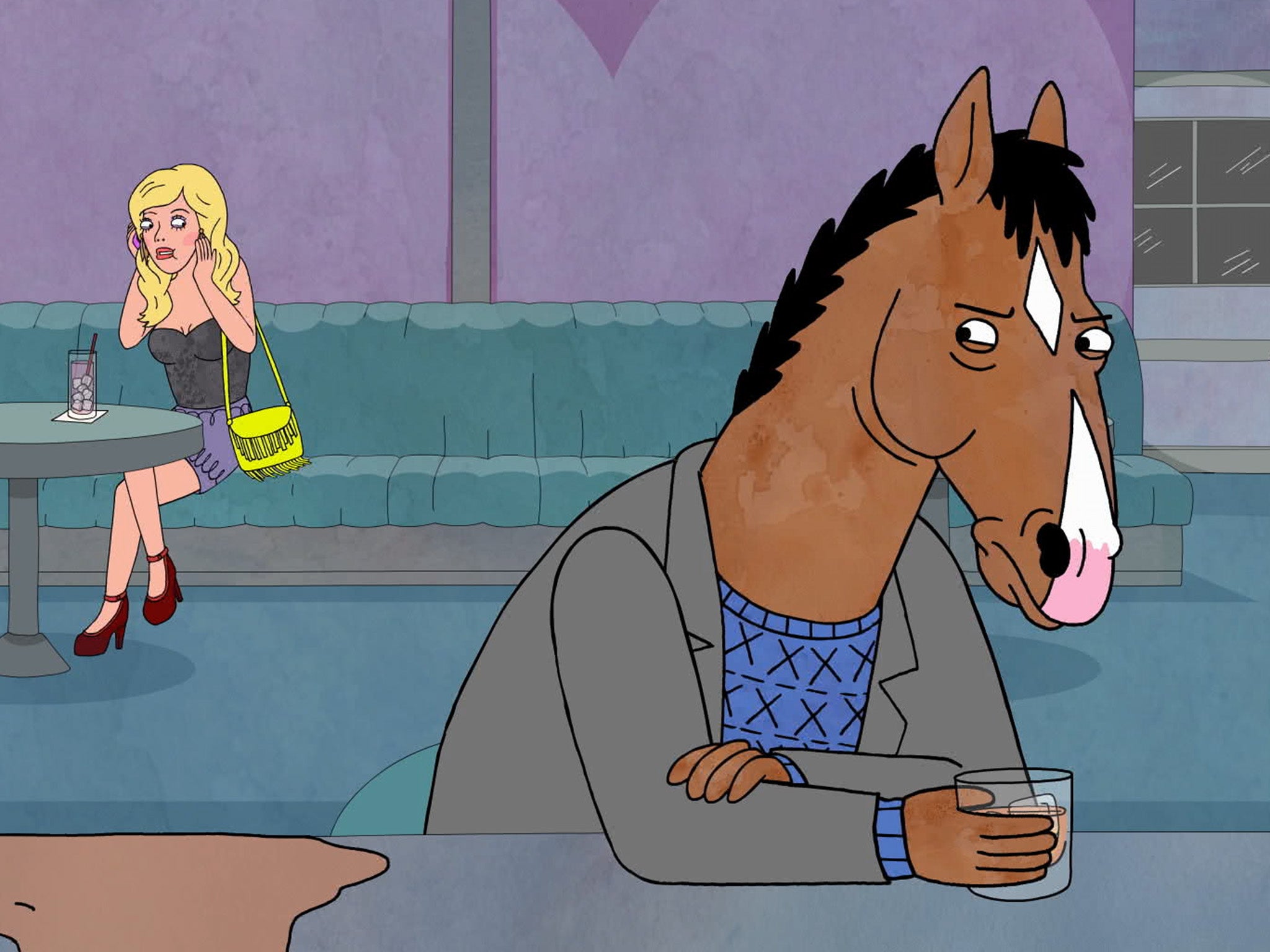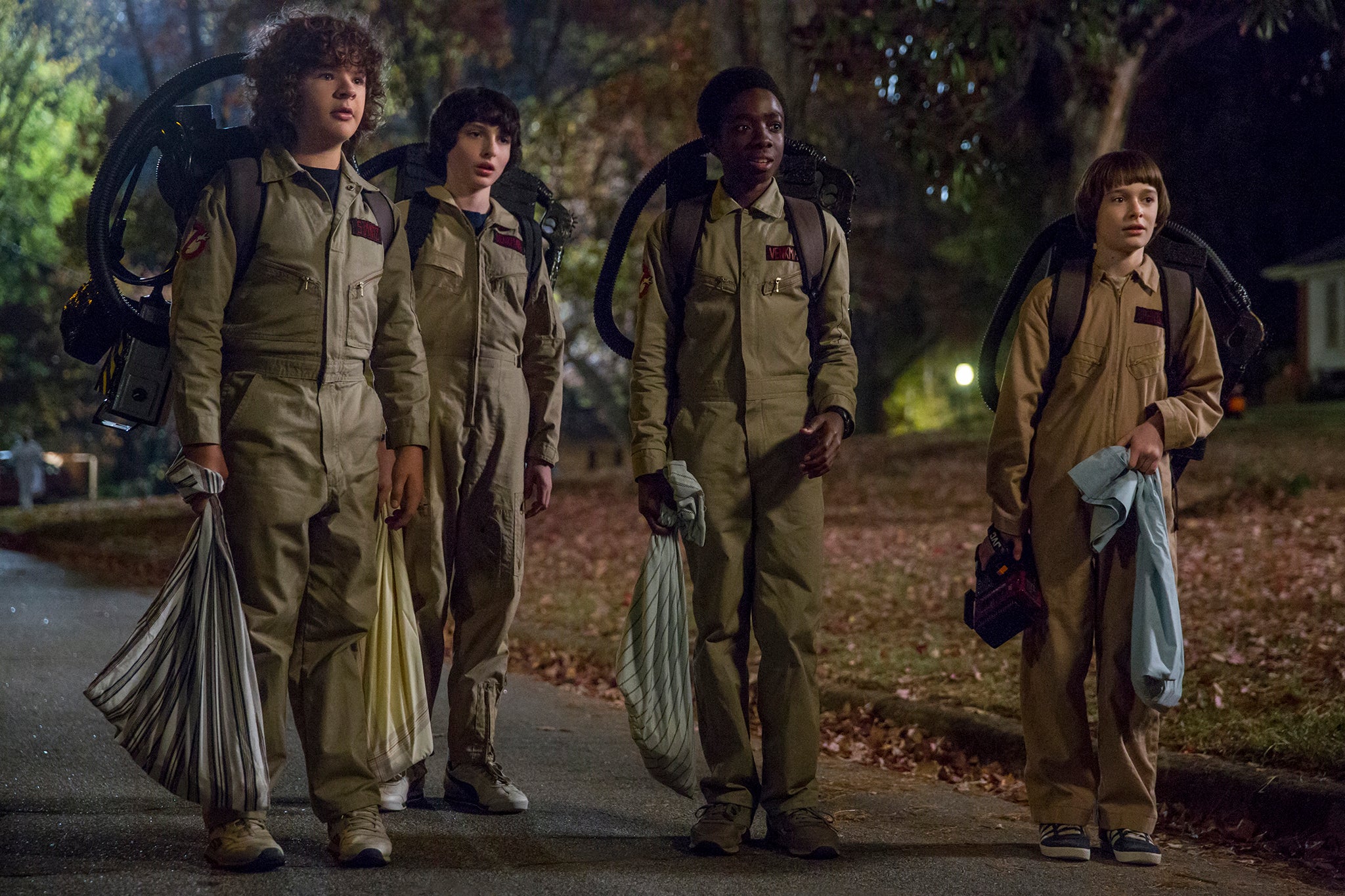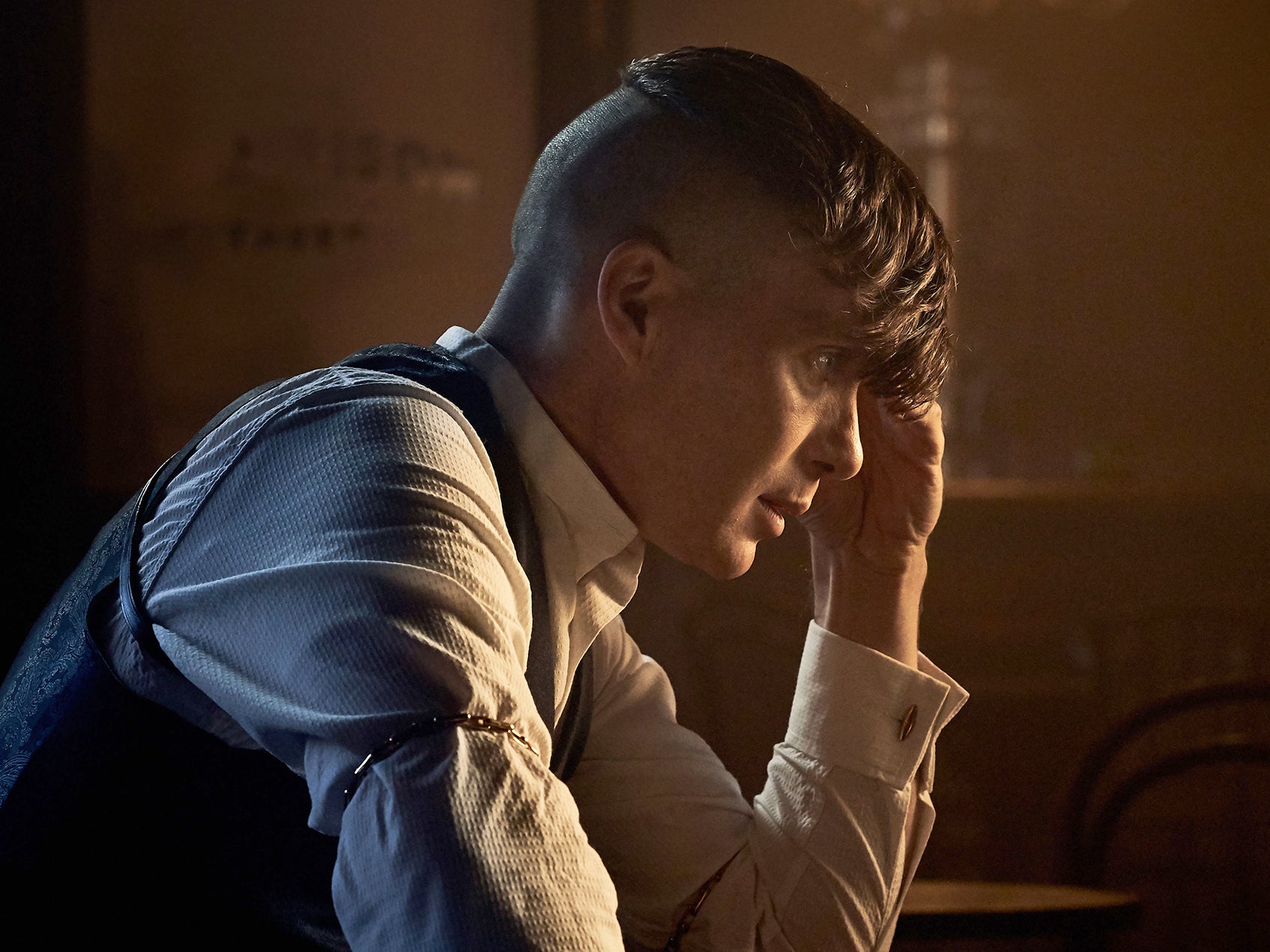The decade that finally changed television forever
Over the past 10 years streaming has changed our viewing habits. But that’s not all, suggests Ed Power: as television and cinema hurtle into the new decade, it is even harder to tell where one ends and the other begins

Television as we knew it 10 years ago no longer exists. As a new decade loomed in late 2009, TV was brooding, aggressive, masculine. This was the golden age of the “Difficult Man”, as epitomised by Breaking Bad’s Walter White, Mad Men’s Don Draper and, slightly earlier, the sociopathic Tony Soprano. The great shows of the era were a tapestry of knotted brows, disastrous domestic lives and barely contained white male fury.
All these years on, angry men raging against the unfairness of life are harder to empathise with. That was the demographic that voted for Brexit and which put Donald Trump – the ultimate difficult man – in the White House. Walter White would, you imagine, have loved the can-do swagger and aversion to facts that define Boris Johnson. Today difficult men are running the world. The idea of them ruling television, too, is mildly less appealing than it was in 2009.
TV, like politics, has gone bigger and louder in the interim. But it has nurtured the weirdo within too. The 2010s were the decade of mind-blowing spectacles such as Game of Thrones and Stranger Things, where in the end it really was just size that mattered.
Yet this was also the decade of Phoebe Waller-Bridge’s Fleabag – who’d have thought “hot priest” was something that could trend in 2019? – and the weaponised haute couture of Killing Eve. BoJack Horseman, a portrayal of depression disguised as a wacky animation about talking animals, may well be looked back on as one of the masterpieces of the age. That the “difficult man” of our current era is an cartoon horse fighting daily against crippling self-loathing shows you how far into the slipstream we have plunged.
The biggest change of all isn’t what we watch – but how we do it. On 1 January 2010 Netflix was a niche American company specialising in postal DVD rentals. Only that November did it give customers the option to sign up to its embryonic streaming service without having to receive DVDs through the letterbox. It didn’t expand into Canada until 2010 and South America in 2011. The UK belatedly had an opportunity to see what the fuss was about in January 2012.
But it quickly became clear nothing would be the same again. By July 2012 Netflix’s UK subscriber base had surpassed one million. The following February in thundered the true game-changer: a $60m political drama from David Fincher starring Kevin Spacey and Robin Wright. One rumour at the time was that Netflix boss Reed Hastings had green-lit the project after his number-crunchers brought it to his attention that David Fincher, Kevin Spacey and political dramas were among the service’s most popular offerings. Why not splice all three into one irresistible package?

The truth is more prosaic: Netflix outbid other US content providers, most significantly HBO, for House of Cards. And it ordered two seasons – 26 episodes – off the bat, where rival networks insisted on seeing a pilot first. Even as streaming services began their ascent another equally seismic trend was underway. As already pointed out, television in the first decade of the century had been gritty and self-consciously glum. It was as if the medium were going through the same transition Hollywood had in the Seventies, as the clapped-out old studio system gave way to the era of the auteur.
It was as if the medium were going through the same transition Hollywood had in the Seventies, as the clapped-out old studio system gave way to the era of the auteur
On TV this meant the decline of staid “network” shows – think box-ticking costume dramas in the UK, cookie-cutter procedurals in America – and the rise of the aforementioned difficult man genre. Hollywood’s flirtation with gritty cinema had ended in the late Seventies when Star Wars and Jaws swept in. And now, much the same was happening in television.
The catalyst was Game of Thrones. When HBO commissioned an adaptation of George RR Martin’s A Song of Ice and Fire novels, it was perceived as a risky indulgence. The sure thing on its slate, it was believed, was Boardwalk Empire – a noir-ish tale of molls, mobsters and malingerers that came with the approval of Martin Scorsese (he even directed the pilot) and a starring turn by Steve Buscemi. This, it was assumed, would be the new Sopranos. Game of Thrones was a punt in the dark.

How wrong everyone – HBO included – was. Tastes had changed and though Boardwalk Empire was perfectly fine it never set viewers’ imaginations alight as Game of Thrones did. It petered out, unmourned, after five seasons in 2014. Grand spectacle had displaced difficult men (no coincidence, perhaps, that the screens we crowded around in our living rooms were now approaching home-cinema proportions). Once we’d thrilled to our first dragon-on-dragon battle, it was hard to imagine going back. Don Draper pensively swigging Scotch looked like yesterday’s thing.
Streaming services were among the first to cop to this. So while Game of Thrones was reprising the early Eighties fantasy movie boom on the TV, Netflix was given us re-furbished Spielberg with Stranger Things. Amazon, which had initially stumbled about in the streaming space, belatedly found its groove with vicious super-hero satire The Boys and Jack Ryan, adapted from the pulp Tom Clancy novels. Even the BBC got belatedly in the game, with adaptations of Philip Pullman’s His Dark Materials and HG Wells’ The War of the World. By decade’s end big was all sorts of beautiful.
As TV mimicked the scope and ambition of movies, so film stars began their migration towards a medium long considered beneath their talents. This great relocation was hastened by equally far-reaching upheavals in film. Marvel-scale blockbusters were taking over. The mid-size adult-drama that had sustained an entire class of actor was ceasing to exist. Or, at any rate, ceasing to exist at the multiplex. Instead it was reborn on television.
Soon only the very biggest movie stars were able to say no to TV. Oscar-winning Kevin Spacey, before his #MeToo downfall, ascended to fresh levels of fame as House of Cards’ dastardly Frank Underwood. Sean Bean will spend the rest of his life being referred to as Ned Stark off Game of Thrones. Cillian Murphy, a distinguished actor and muse to Ken Loach, had never been asked for a selfie in public until season one of Peaky Blinders. Television was where stars were made now. Not where they went as their lustre faded.
Nicole Kidman recognised this too and in 2017 joined Reese Witherspoon, Laura Dern, Zoe Kravitz and, in series two, Meryl Streep for the glamorous nonsense of Big Little Lies. The show’s creator David E Kelley had spent most of his career pumping out schlock such as Ally McBeal. He was at it again here. The different was that Big Little Lies had a “prestige” gloss and so was received as Important Television rather than the voyeuristic peek over the shoulder of the American one-per cent that it really was. Still, it was a showcase for its A-listers, putting them in a spotlight in a way their recent movies had failed to do.

Millions and millions were being poured into TV now with shows frequently commanding Hollywood budgets. Netflix lavished $130m on season one of The Crown, its sprawling retelling of the life and times of Elizabeth II. Game of Thrones’ final season clocked in at $15m an episode – the same figure Apple, debuting its Apple TV + service in 2019, spent on the Morning Show (Witherspoon again) and Jason Momoa’s See.
All of these big spenders were made to tremble in November 2019 as Disney + made planet-fall in North America and the Netherlands (it is due to debut in the UK on 31 March 2020). It has already rolled out an original Star Wars series, The Mandalorian, and is working on small screen outings for Marvel heroes such as Elizabeth Olsen’s Scarlett Witch and Tom Hiddleston’s Lanky Loki. Little wonder Netflix’s price dipped when Disney revealed its ambitions in the sector.
Streaming was also reconfiguring our viewing habits. Ten years ago bingeing was something you did when left alone with a tub of ice-cream. Now Netflix and its competitors precision-engineer their shows to reel us in and keep us watching. We’ve all been there – losing a weekend to Stranger Things or the new batch of Crown episodes. When Reed Hastings joked that Netflix’s biggest competitor was sleep he was only half in jest. More and more of us are staying up past bedtime, eager/desperate to chug down just one more instalment. We can stop any time we want. But we don’t.
Ten years ago bingeing was something you did when left alone with a tub of ice-cream. Now Netflix and its competitors precision-engineer their shows to reel us in and keep us watching
It helped that cinema is putting up ever feebler competition. As noted above, the middle ground has vanished. All Hollywood is interested in today are caped blockbusters feel like variations of the same flavour. It is all about the carnival ride: the popped ears and the thumping heart. If you want to be treated like a grown up you are better off at home on the couch.
Because as movies focused on frying the eye-balls, it was television that has treated us as adults interested in more than having our pulse sent sky high. If David Fincher was making Seven today it would be as a 10-part Netflix series. Actually he did just that, with two seasons of revisionist serial killer thriller Mindhunter.
Weirdness became its own distinct niche. Twin Peaks: The Return double down on the terrifying eccentricity of David Lynch’s original 1990 original. Not many people watched but critics loved it and the Showtime network was happy to be seen supporting a genius. Taking up the challenge set down by Lynch was Netflix’s The OA, which featured inter-dimensional interpretive dance and a talking octopus.

There were contradictions of course. Even as the era of the grand spectacle dawned, so nostalgia became bound up in TV. Friends, a sitcom so Nineties you could feel yourself growing a Kurt Cobain haircut as you watched, was rediscovered by Millennials (though they tutted as the Chandler-is-gay jokes).
In December 2018, Netflix paid $100m to keep Friends – for another year. Just 12 months later it was outbid and will lose US rights in 2020. Netflix was so upset, it actually Tweeted about the news. “The One Where We Have To Say Goodbye…We’re sorry to see Friends go to Warner’s streaming service at the beginning of 2020 (in The US). Thanks for the memories, gang”.
Nostalgia of a different vintage saw a slow-moving ITV drama about poshos and plebs become a global must-see. Downton Abbey was about as exciting as a flower-arranging marathon. Yet Julian Fellowes’ valentine to elegant aristos attracted loyal viewers, especially in the United States and Asia from 2010 to 2015 (and in 2019 spawned a hit movie). This fairytale vision of wise lords and ladies and grateful servants was lapped up internationally as if it were a window into the real Britain (the Brexit tragicomedy would quickly set the record straight).
Reality TV – much like death, taxes and Coldplay double albums – remains with us, too. The genre, it is true, is now getting on a bit. Next year will mark the 20th anniversary of Channel 4’s Big Brother (finally put out of its misery by new custodian Channel 5 in 2018). But the more things change the more likely they are to squeeze into a pair of speedos and work on their tan.
Reality TV in the 2010s can be summarised in just two words “Love Island”. Sending sizzling singletons to Majorca and have them mooch around a pool for two months might not sound like raw ingredients for a blockbuster. Yet it has proved exactly that. There are now spin-offs on three continents while a winter season upcoming on ITV2 will jet all the way down to South Africa
As 2020 approaches, the only possible conclusion, then, is that television and the movies no longer inhabit their own distinct universes. A once yawning chasm has narrowed to the point where it can barely be discerned. Scorsese’s The Irishman has been in cinemas – some cinemas, at least – for several weeks now. Most of us will, however, encounter it first as a three-hour Netflix presentation.
Considering the running time, it seems a given that a fair percentage of that audience will digest the movie in chunks. They will in other words experience the new Scorsese as television. The big news as Disney + arrives, meanwhile, is how wonderful its Star Wars series The Mandalorian is. Some fans are describing it as the best Star Wars “movie” since the original trilogy. It isn’t actually a film of course. But it feels like one. And so, as television and cinema hurtle into the new decade, it is ever harder to tell where one ends and the other begins.
Join our commenting forum
Join thought-provoking conversations, follow other Independent readers and see their replies
Comments